The statistics are mind-boggling.
Over 31 million bloggers exist in the United States alone.
The popular Wordpress platform hosts 42 million blogs worldwide with 25 million pages viewed a month and five hundred thousand new posts added each day.
Combine social media to the blogosphere, and the numbers are staggering. Facebook boasts over 750 million users. YouTube reports 490 million unique monthly visitors. Twitter users post close to two billion tweets a day. LinkedIn claims more than 175 million registered users utilize the site.
This much is evident: blogging and social media paths are clearly intertwined.
How can writers take advantage of the popularity of both mediums to boost readership and enhance their personal brand?
Four social media and blogging experts—Samara O’Shea, Krista Canfield, Josie Loza, and Shira Lazar—share experiences and recommend ways writers can apply social media and blogging strategies.
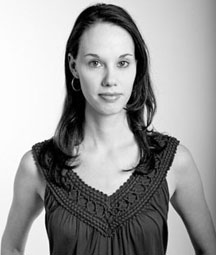
“To a writer, or to me anyway, an audience is just as important as a paycheck, and the HuffPo certainly offers its bloggers an audience.”
(Photo: Samara O’Shea)
Samara O’Shea is the author of Note to Self: On Keeping a Journal and Other Dangerous Pursuits and For the Love of Letters: A 21st-Century Guide to the Art of Letter Writing. She writes letters on behalf of others at LetterLover.net and guest blogs for The Huffington Post.
1.Welcome, Samara. You’ve written two wonderful books about journaling and letter writing. How were you able to leverage your publications as a bridge to become a contributor at HuffPo?
My first book came out in 2007, and the online marketing director at HarperCollins arranged for me to do a number of guest blogs for promotion. At one point, she asked if I would like to write for The Huffington Post. I assumed it was just another guest blog. I had no idea the HuffPo was poised to become as big as it is.
2.So true! According to Alexa statistics, The Huffington Post has a global rating of eighty-two and sits at number nineteen in the United States. As I read through multiple posts on the site, I wonder: Do HuffPo bloggers write on niche topics, and what requirements do they ask bloggers to follow?
I think most HuffPo bloggers stick to one topic, but there are those (like me) who move back and forth between subjects. I have many opinions and don’t like to pigeonhole myself. Since we are not paid, we are not required to write on a regular basis. It’s up to the blogger to decide how often they write. Some may write one blog and never contribute again, while others write once a month. It’s recommended that blogs not be longer than 800 words because readers have short attention spans. I’ve broken this rule a few times, and it’s been accepted.
I’m not sure what the requirements are for being a HuffPo blogger. I suggested a friend of mine write for the travel section last year. He’s not a writer but a venture capitalist with many travel tales to tell. The travel editor liked his voice, and he was brought on board as a blogger.
3.That’s wonderful news about your friend. One element I’ve noticed about several pieces on HuffPo is the interaction between author and reader. For example, your piece about married men has nearly thirteen hundred comments. Why is it important for bloggers to participate in these discussions? How do you determine which comments to respond to?
I think it is important (and enjoyable) to engage the audience when there are a small number of comments. It’s a sign of appreciation for those who took the time to read the piece. Plus, some members of the audience make points that the writer hadn’t thought of, and it’s a chance for the writer to acknowledge their ideas.
When a blog receives a large number of comments—such as the piece of mine you mentioned, “Interview with an Adulterer,” I think it can be dangerous for the blogger to get too involved. There are so many opinions coming at you. You’ll go crazy if you try to respond to all of them, and you’ll go even crazier if you take the opinions personally. The anonymous audience can be hostile, and there’s no need to get wrapped up in it.
4.You make a valid point. What effect does social media have on the blogosphere? Has it helped build readership?
Social media certainly has a positive effect on blogs, but I think it does more for personal blogs than HuffPo blogs. The HuffPo has a built in readership at this point. In either case, it’s a chance for people in your Twitter and Facebook feed to read something they may not have known about otherwise, and that’s a plus. If people like what they see, they’ll come back for more; so readership does expand.
5.What a great reason to blog! Everyone appreciates a growing audience. Samara, what do you find rewarding about blogging (and why in the world would you do it for free)?
Pitching to traditional publishing outlets can be exhausting. I’m thinking of magazines especially—you are often told that your ideas aren’t trendy enough, or “We just did a story on that.” It’s a frustrating guessing game, so to have an outlet like HuffPo, where my ideas are always accepted (and often receive upwards of eight hundred comments), is a gift. To a writer, or to me anyway, an audience is just as important as a paycheck, and the HuffPo certainly offers its bloggers an audience. I once had CNN contact me because they saw one of my HuffPo blogs. The story never ran, but knowing that major news outlets are reading is satisfying.
Ariana Huffington has said that blogging for HuffPo is similar to appearing on the radio or television for free—you’re doing it to promote yourself and your work. I agree with that. Of course, I wouldn’t turn down money from them; but right now, they’re not paying, and that’s that.
Writer Jason Linkins explains how The Huffington Post works—who does and does not receive payment—in this post.
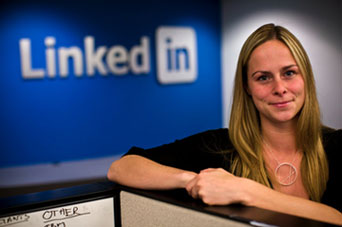
“Treat LinkedIn like a global business lunch or conference.”
(Photo: Krista Canfield)
Krista joined LinkedIn in 2008. She develops, implements, and oversees LinkedIn’s global consumer PR efforts. She is also responsible for creating and managing LinkedIn’s journalist training program. Krista has trained journalists at top publications around the globe (CNN, Fortune, NBC, The New York Times, The Wall Street Journal, etc.) on how to use LinkedIn as a reporting tool to uncover story ideas, sources, and scoops. To date, more than sixteen thousand journalists are members of the LinkedIn for Journalists group. Krista has been quoted in local, national, and international print publications and also has appeared on both live and taped radio and TV segments. She’s spoken at numerous events as both a panelist and an opening keynote speaker.
Krista is a graduate of Syracuse University and began her career in broadcast television. In addition to working at LinkedIn, Krista is also a member of Syracuse University’s School of Information Studies Advisory Board and is also on DeVry University’s Career Advisory Board.
6.Krista, I’m excited to learn more about LinkedIn as a networking tool. Why should writers and authors utilize LinkedIn as a marketing tool, maybe even more so than Facebook or Twitter?
There are so many tools on LinkedIn that are useful for writers and authors. For instance, you can use LinkedIn skills to uncover trends about the beat you cover. If you write articles related to fitness, you might want to see what skills are on the rise or on the decline. If you cover the mobile space, checking out the growth of Android as a skill might be of interest to you.
LinkedIn also makes it easy for journalists to follow LinkedIn company pages and stay updated on senior level changes and new hires. There are over two million LinkedIn company pages, so search for your beat companies’ profiles, and click “Follow Company” to get regular updates on hiring, promotions, departures, and job listings. If you’re a freelance writer, you can also follow outlets like Conde Nast or CNBC and get the same kinds of updates.
LinkedIn “Advanced People Search” helps you easily uncover experts and sources. Search by company name, company size, keywords, title, or any other facet to find exactly the source you need. Click on the person’s profile, and you’ll see if anyone in your network knows them and can introduce you.
7.I feel like I have so much to learn about tapping LinkedIn’s potential! What are the advantages of signing up for different groups? What should a writer expect from joining a group?
You can join up to fifty LinkedIn groups, and there are more than one million groups you can choose from (including the official LinkedIn for Journalists group.) Use LinkedIn groups to find your readers and what they care about. If you cover working mothers, do a search for LinkedIn groups that have similar keywords in the group name and description (like “parent,” “moms,” etc.). If you cover technology, look for CIO or CTO related groups you can join. Being involved in groups means you gain insight into what your target audience is discussing and what interests them most. Groups can also be a wonderful way for writers to get more clicks on their articles. If you cover mobile as part of your beat and just wrote a great piece on the new iPhone 5, chances are high that members of iPhone related groups on LinkedIn would be interested in reading your piece.
8.Good advice, Krista. For freelance writers and authors new to LinkedIn, what types of information should they post? Also, what shouldn’t they post if they’re serious about building a brand?
When an article you wrote posts online, make sure you share it with your network. All you have to do is insert the link and a quick description about the story or even just the headline. Pair your LinkedIn and Twitter accounts, and those updates can go out to both networks at the same time. Include the links to your best work or favorite articles under the “Websites” section of your profile. Taking these steps will increase clicks on your story links. It also gives your sources (and editors) a better feel for the angles you cover. Treat LinkedIn like a global business lunch or conference. You probably wouldn’t run up to every person at a conference and say, “Hire me!” or “Use my services,” so don’t do that on LinkedIn either.
If you see someone asking a question on LinkedIn “answers” that you have a stellar response to, make sure you answer that person’s question rather than just blatantly pitching your business. It’s also important to add a photo to your profile. You’re seven times more likely to have your profile viewed if you add a photo. Don’t post a photo of you and your dog unless you’re a veterinarian. Only post photos of you in yoga class if you’re a yoga teacher. Your best bet is a simple headshot from the shoulders up with a plain white background.
9.Seems like common sense networking. Thanks for the tips. It seems like each networking site has its own language and means of finding information. Should writers be concerned with SEO when posting to LinkedIn? How can writers optimize SEO and keywords to reach a wider audience?
You should definitely be concerned with SEO on LinkedIn. Own your professional brand and Google search results for your name by customizing your LinkedIn public profile URL. Edit the link so it’s your firstnamelastname (or if that’s taken, lastnamefirstname). Now you control what people see when they do a search for your name on search engines. This means people will always get the most recent information about you as you change jobs, switch beats, and update LinkedIn accordingly. Add LinkedIn skills that are relevant to you to your profile. (For writers, skills, like “headline writing” and “AP style,” should be added to your profile, so you come up in searches for those terms.) Also make sure that you add your full work experience to your profile.
LinkedIn members can search by years of experience, so if you only have your most recent position on your profile, and you’ve only been in that role for six months, you look like a writer who has only six months of experience.
10.I am amazed how LinkedIn has grown since I joined in 2005. How many users does the site currently have registered? Where do you see LinkedIn headed in the next two years?
LinkedIn has more than 175 million LinkedIn members and is growing at a rate of approximately 2 new members per second. I can tell you that there are over 16,500 journalists who are members of the official LinkedIn for Journalists group, so that’s a fantastic place for journalists to network with their peers.
For instance, there are:
- 190 members of the LinkedIn for Journalists group work for Thomson Reuters
- 138 members work for The New York Times
- 132 members work for The Associated Press
- 109 members work for Bloomberg LP
- 9,685 members of the LinkedIn for Journalists group are based in the United States
- 1,355 members are based in the United Kingdom
- 870 members are based in Canada
- 488 members are based in Brazil
You can also get some other neat stats about the LinkedIn for Journalists group. More tips and information about LinkedIn for Journalists can be found here.
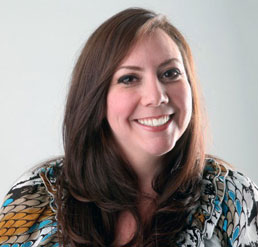
“Our blogs matter. We give a voice to those who might not have one. A platform for women and men to discuss real issues or be inspired by real stories.”
(Photo: Josie Loza)
Josie Loza’s journalism background dates back to her years at Omaha Bryan High School’s newspaper and yearbook classes. After high school, she was hired as a newsroom messenger at the Omaha World-Herald—mostly fact checking, research, and errand running—and held that position while attending the University of Nebraska at Omaha, where she earned a bachelor’s of arts degree in journalism. Josie has held many positions: weekend reporter, night cops reporter, obit reporter at Omaha World-Herald and eventually earned a weekly nightlife column and became a full-time entertainment reporter covering trends among young people, fashion, music concerts, comedy shows, and all things after dark. Most recently, Josie shifted gears and was promoted in late January as the editor of momaha.com, Omaha World-Herald’s online site for moms.
11.Congratulations on the promotion to editor momaha.com, Josie. You’ve been leading the group of mommy (and daddy) bloggers for close to a year now. Originally, what led the paper to the decision to begin momaha.com? When did it launch, and how has it changed since?
Momaha (mom-aha) is the Omaha World-Herald’s online community for moms. Our goal is to help moms learn, laugh, and connect. The site launched nearly three years ago with a team of eight to ten mom and dad bloggers who regularly contribute. We have several new faces in our blog line-up and plan to announce four more. Before the year is out, we’ll have twelve momaha bloggers. The site continues to grow and become more interactive for readers who can participate in our forums and weekly live chats. We’re active on Pinterest, Twitter, and Facebook. As I’m sure you know, social media has connected reporters and bloggers with their readers in a very special way. I love the instant feedback. When I finally meet some of the parents that I’ve been having discussions with in our forums and chats, I feel as if I’m running into an old friend. I’m a hugger.
So many times, I end up hugging random people who say, “I know you. How are your daughters?”
12.That’s a great feeling to know you’re making a connection—and an impression—with readers. A lot of mommy blogs exist in the blogosphere. What sets momaha apart from other mom blogs out there?
Great question. There are plenty of mom blogs out there. We try to support one another as much as possible. It’s nice to read what other blogs are doing.
But momaha is focused in connecting with our readers through our personal experiences, current events in the news, and connecting through social media accounts. We want to engage our readers in meaningful discussions, and I think many of the momaha bloggers do a great job in the topics they write about—from the ups and downs of married life to their children’s first day of school memories to fashion trends and places to take the kids on the weekend. We want to be able to run into our readers at the grocery store and continue those same conversations while checking out at the register.
We’re powered by the Omaha World-Herald, and I’m sure the other mom and dad bloggers on our team could tell you that we respect the news organization. It pushes us to dig a little deeper in our blogs, to fact check details, and write in an engaging and entertaining way.
13.I know I check out the latest blog posts daily. I’ve also been impressed with momaha’s integration with social media. What outlets do you use, and how has social media increased traffic?
Facebook, Pinterest, Twitter, FourSquare, Flickr, . . . um, pretty much you name it. Ooh, ooh, and Instagram. I love Instagram.
Again, the more you connect, the more your readership will grow. It’s been a natural progression. Since I started as editor in late January, our accounts have nearly doubled—especially Twitter. I’m able to connect with other mom groups and bloggers in major cities. Pretty cool.
14.I look forward to the Friday afternoon live chats if I’m not swamped with deadlines. You keep everyone engaged for the entire hour. Not an easy task! Josie, not every blogger has journalism experience, but do you find your journalism background makes you a stronger blogger?
Well, that goes back to your second question. There are a lot of mom blogs out there, lots of moms writing about their adorable children, sharing recipes and recent Pinterest pins. When I read a blog, I want to connect with the author. I want to see images of their children, know their names and ages, read great narrative pieces. I want to read “showing details” in momaha blogs. I want to close my eyes and visualize the tattered blue blanket that little Joe won’t leave home without. I want to giggle when Skippyjon Jones’s eyeball falls out of his socket, terrifying preschoolers at a library storytime.
All that, and I have thick skin. You have to have thick skin if you decide to enter the HTML world of mom bloggers.
We enjoy the feedback—the good, bad and really ugly—because we get a chance to “hear” from our readers. At times, it hurts. It’s painful. It makes us think: why did I write that about my family and now the entire world (or Omaha metro-area) is coming down on me? You still push on through to the next blog.
Our pieces are important. Our blogs matter. We give a voice to those who might not have one—a platform for women and men to discuss real issues or be inspired by real stories.
15.Yes, those real stories keep readers engaged and returning for more. Like all bloggers, I imagine you tune in to certain keywords to draw readership. How does momaha use metrics and SEO to enhance reader experience?
Everyone knows about “keywords” that might or might not help momaha’s ratings.
I think it’s important to stay in tune with what readers like, whether it’s photos of puppies or school grade reports.
I also think it’s important to watch readers’ habits: when they’re online, which stories are they clicking into, which days of the week do they look at meal recipes vs. going out activities with the kids.
We want to make sure momaha readers get the most out of their online experience.
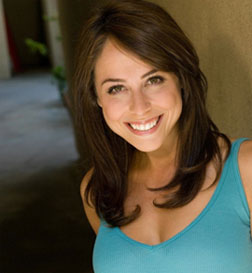
“You don’t need to work for a brand to become a brand and trusted source yourself.”
(Photo: Shira Lazar)
Considered a digital trailblazer, Shira Lazar serves as host and executive producer of the Emmy-nominated, live, interactive show and 24/7 news hub, What’s Trending. Shira also created the YouTube talk show, Partners Project. She has been named one of Fast Company’s 2011 Most Influential Women in Technology, and HuffPo tabbed Shira on the “Women in Tech to Follow on Twitter” list. Not only has Shira covered journalism beats—including CBS, Conde Nast, and Hollywood.com—she has presented at multiple new media conferences, including SXSW and Mashable Media Summit.
16.Shira, I’d like to welcome you to WOW! Women on Writing. I’m impressed with your wide range of experience. You’ve worked with everyone from CBS to Entrepreneur and now your own platform, What’s Trending. What advice would you offer to a writer—with no video experience—who is contemplating starting a vlog?
Start a vlog about something you know a ton about or are very passionate about, that way you have an expertise and something valuable to bring to the community. Figure out ways to complement your writing with video. Maybe include a video interview with your subject or a look at them in her environment as an additional angle to the story. If you’re going to have a vlog, be consistent with it, so your audience knows when to tune in. You build loyalty with an audience when they know you are reliable and post on a certain schedule.
17.I think I’d like to give it a try with my blog. Thanks for the tips. The folks at Mashable introduced me to What’s Trending. How did the show begin, and what’s the primary goal of What’s Trending?
To build a multi-platform new media brand around social news and videos that is being shared across the web. What MTV was to music videos, we want to be for YouTube videos and the culture around it.
18.It’s fascinating! Without What’s Trending, I would have missed a lot of breaking videos. The role of social media seems to change daily. Why should a writer build a strong social media presence?
You don’t need to work for a brand to become a brand and trusted source yourself. Social media isn’t just about posting things you’re doing; but if you’re an expert or journalist on a certain subject, look to become the curator of that niche through social media. Many of the most-known journalists around these days have become just as famous and notable as the places they work. That’s powerful because you have a built-in audience. You become the platform.
19.And that audience continues to return. Content—even by definition—also changes daily. When I first started in journalism twenty years ago, I reported news stories. Maybe a letter to an editor shook things up. Now, the interactive experience is the norm. How can writers enhance a reader’s interactive experience beyond leaving comments or following on social media outlets?
Some journalists don’t like doing this, but I always find it interesting to see a journalist bring readers along the journey of covering a certain story. It’s not just about the product and reactions after it’s posted, but how do you engage so they feel connected to your content 24/7? Nicholas D. Kristof is great at that. Not only do you feel a certain connection with him as a journalist, but you end up caring more about the stories that he’s covering too because you’ve experienced them unfolding.
Including images/slides and video when applicable is also a great way to get readers to share the work. Also, ask your readers questions of what they want to hear more about, what’s important to them. You’d be surprised how much value and connection can come from one question. Don’t just be a broadcaster, but use your platform and stories to create a conversation.
20.And continue the conversation on social media, too. Where do you think social media is headed in the next year? What changes may we see five years from now? It’s exciting, isn’t it?
Who knows? I’m sure Google glasses will be part of it! You’ll be able to look at someone or scan your phone over their face and through facial recognition pick up all their social network data.
Won’t that change the social media landscape!
Whether you are classified as a mommy blogger or identified as a guest writer for The Huffington Post, blogging and social media seem destined to continue growing.
Writers from all genres need to embrace the ever-changing world, allowing readers the opportunity for an interactive experience.
And that will make you stand out as one among 42 million.
***
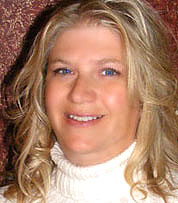
LuAnn Schindler is a full-time freelance journalist living on the eastern slope of the Nebraska Sandhills on a dairy farm with 200+ Holsteins. She currently blogs for The Muffin, the WOW! Women On Writing daily blog. Her work has appeared in the Pregnancy, 2: The Couples Magazine, Denver Post, Rural Electric Nebraskan, Absolute Write, in addition to other publications. LuAnn is a member of the International Food, Wine, and Travel Writers Association. She won a 2010 Nebraska Press Award for feature writing. Visit her website at www.luannschindler.com.
-----
Enjoyed this interview? You may also like:
20 Questions: The Future of Digital Publishing
Using LinkedIn Effectively: Interview with Victorial Ipri
Social Media SLAM: There's a Reason They Call It Social Media, and Online Reputation Tips for Writers: How to Be Your Own Publicist